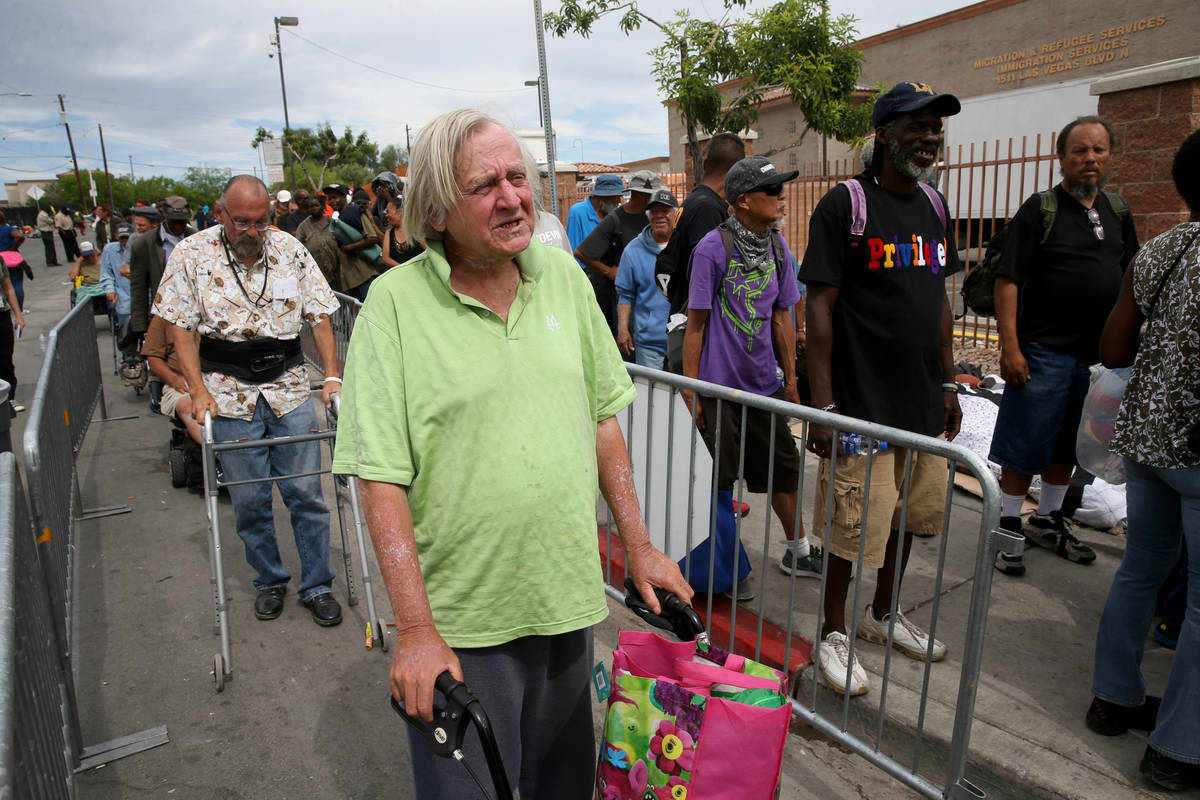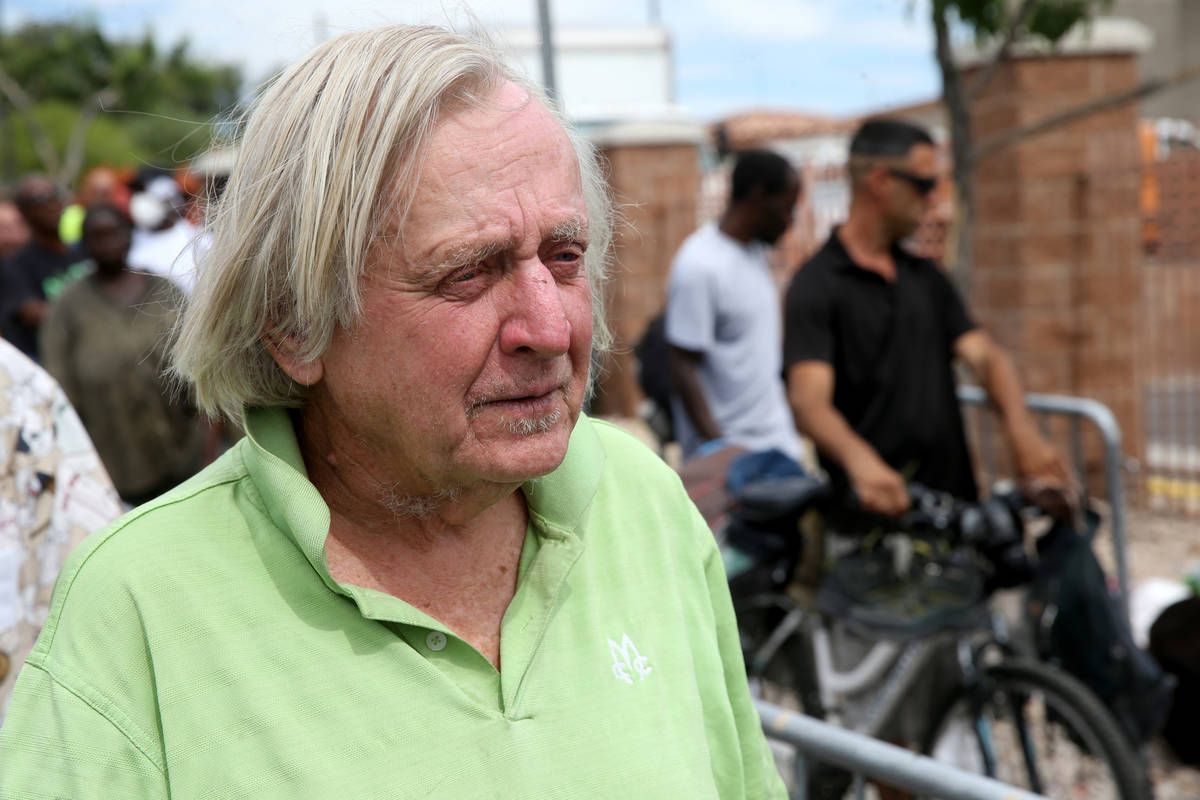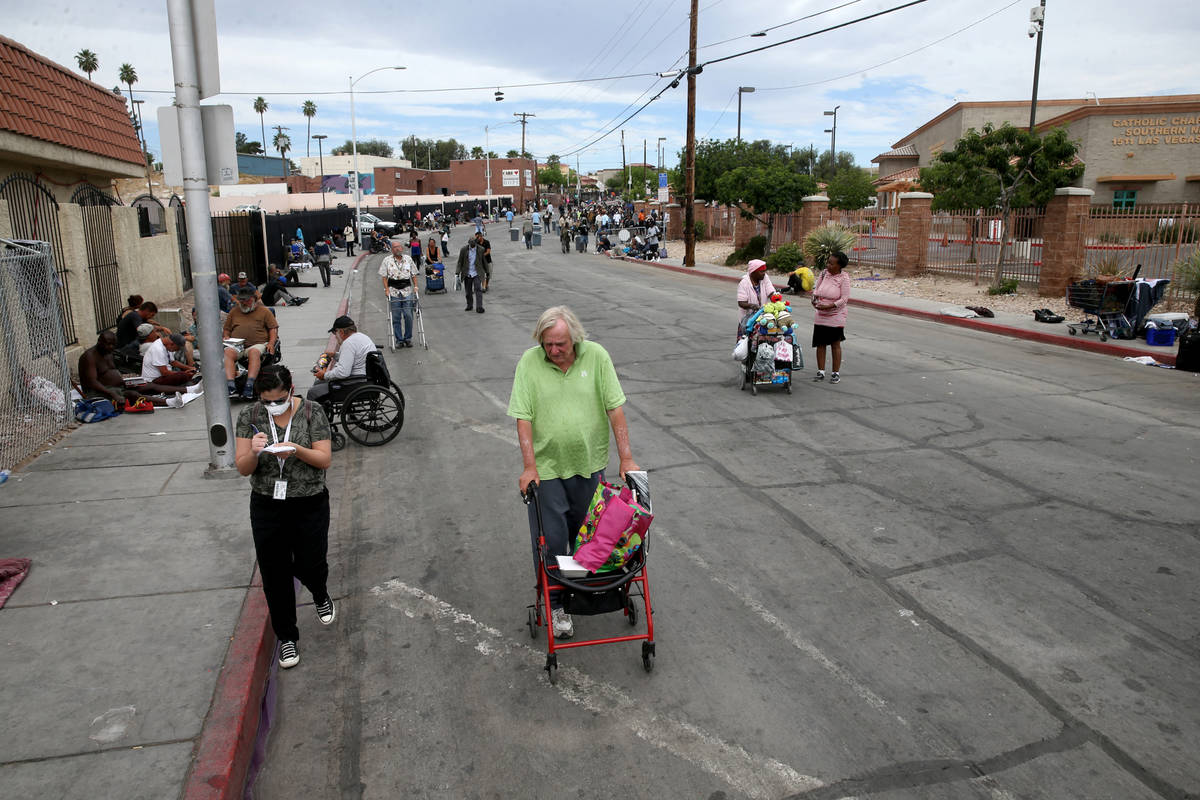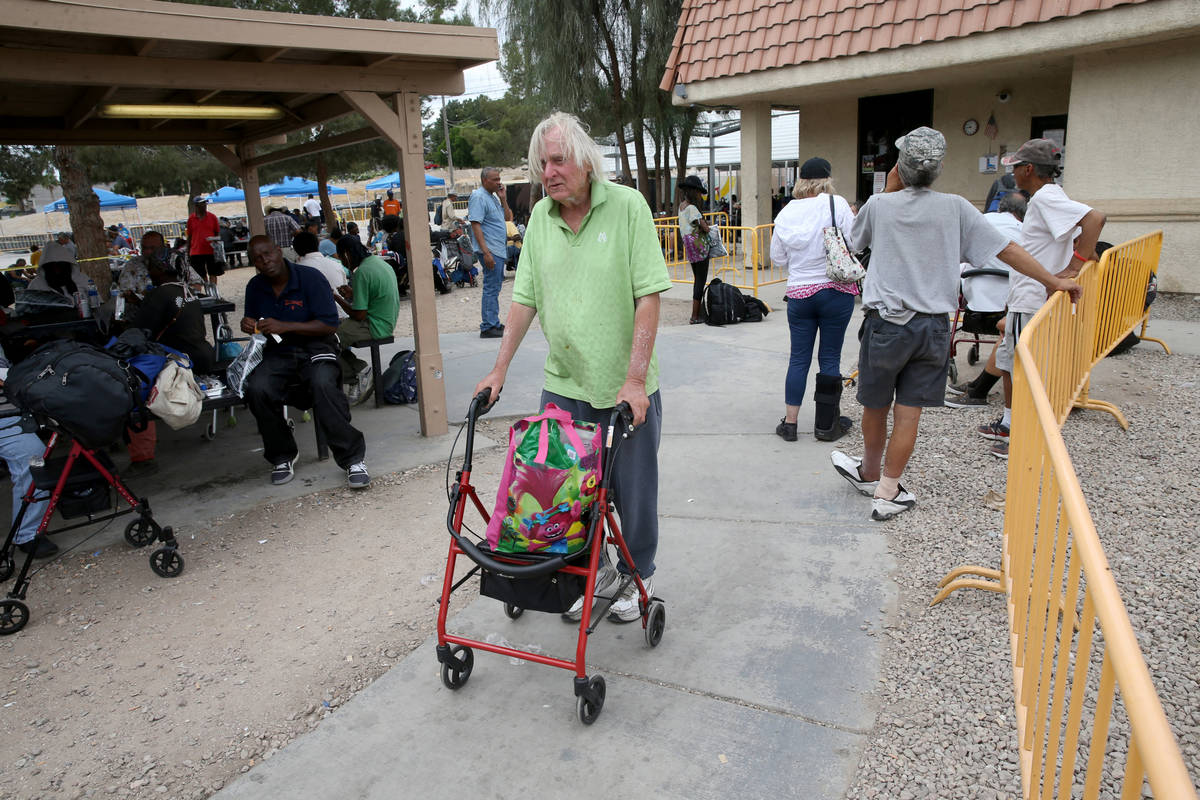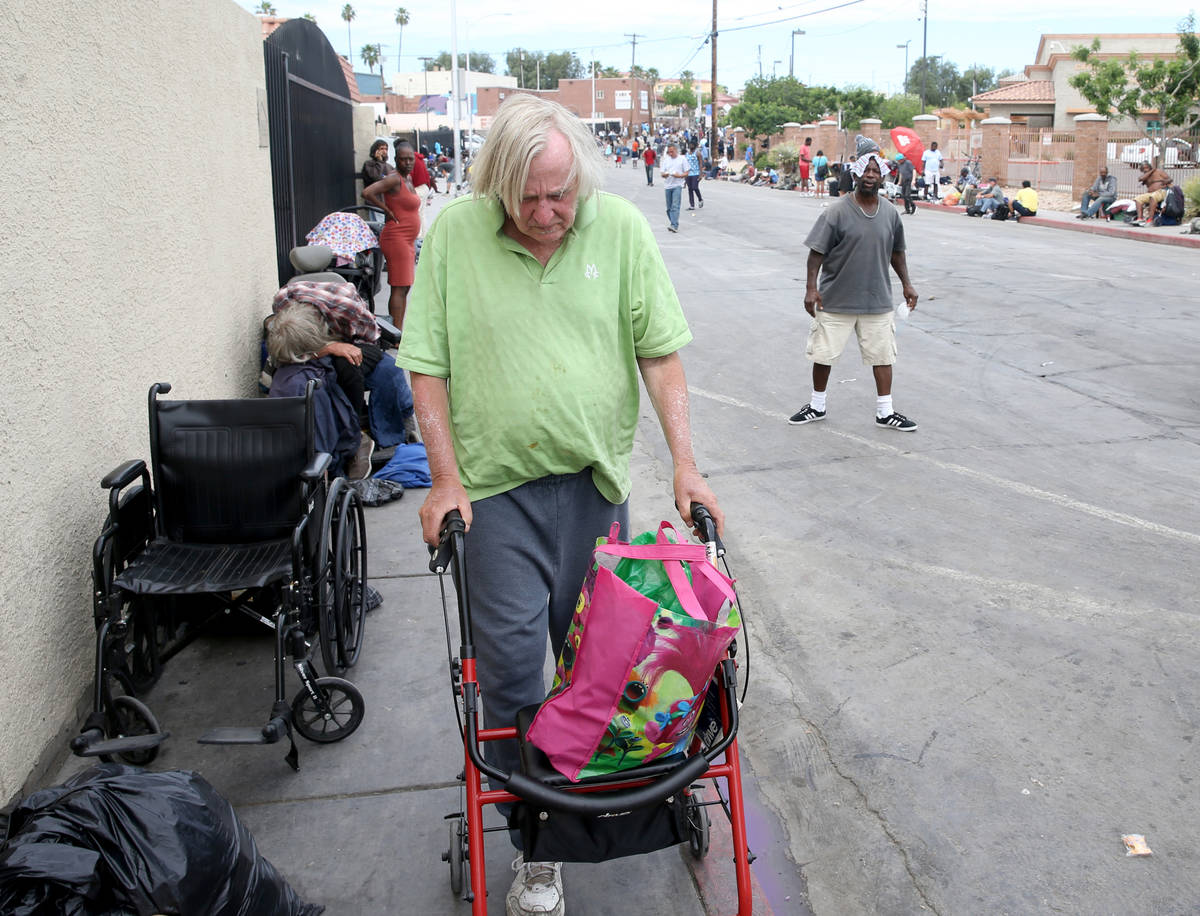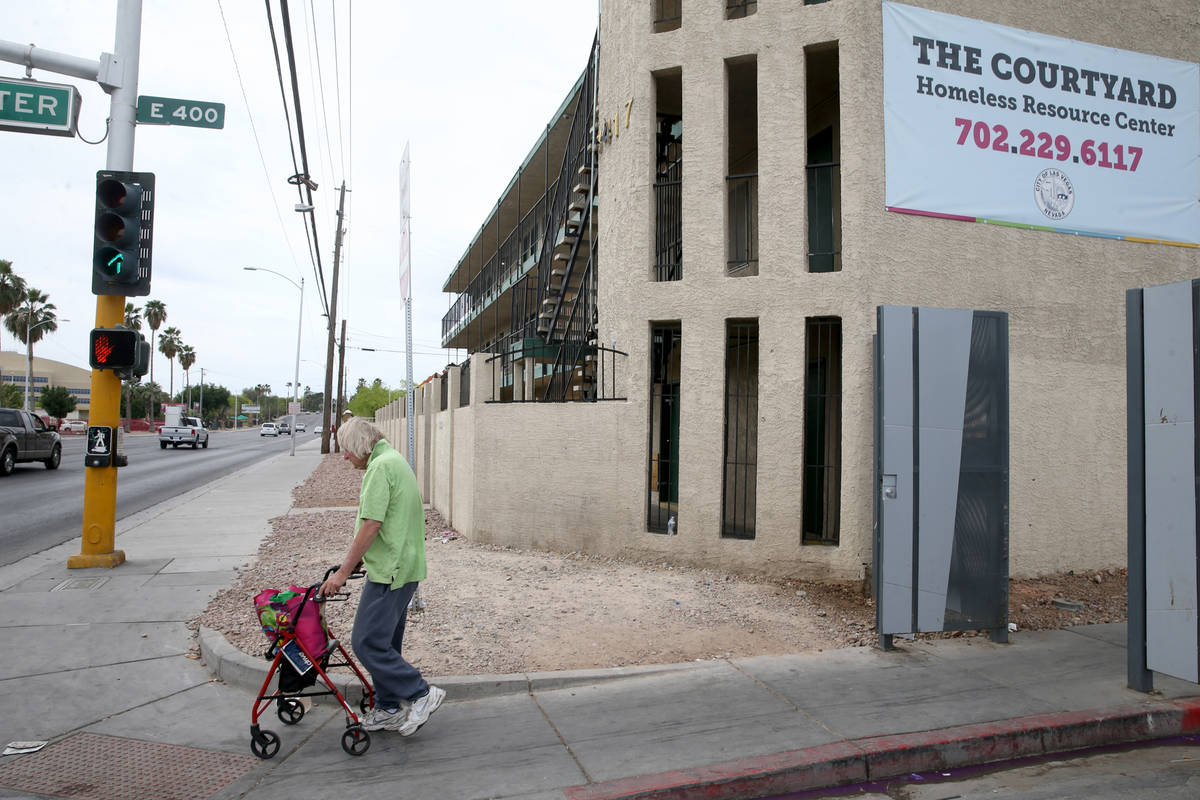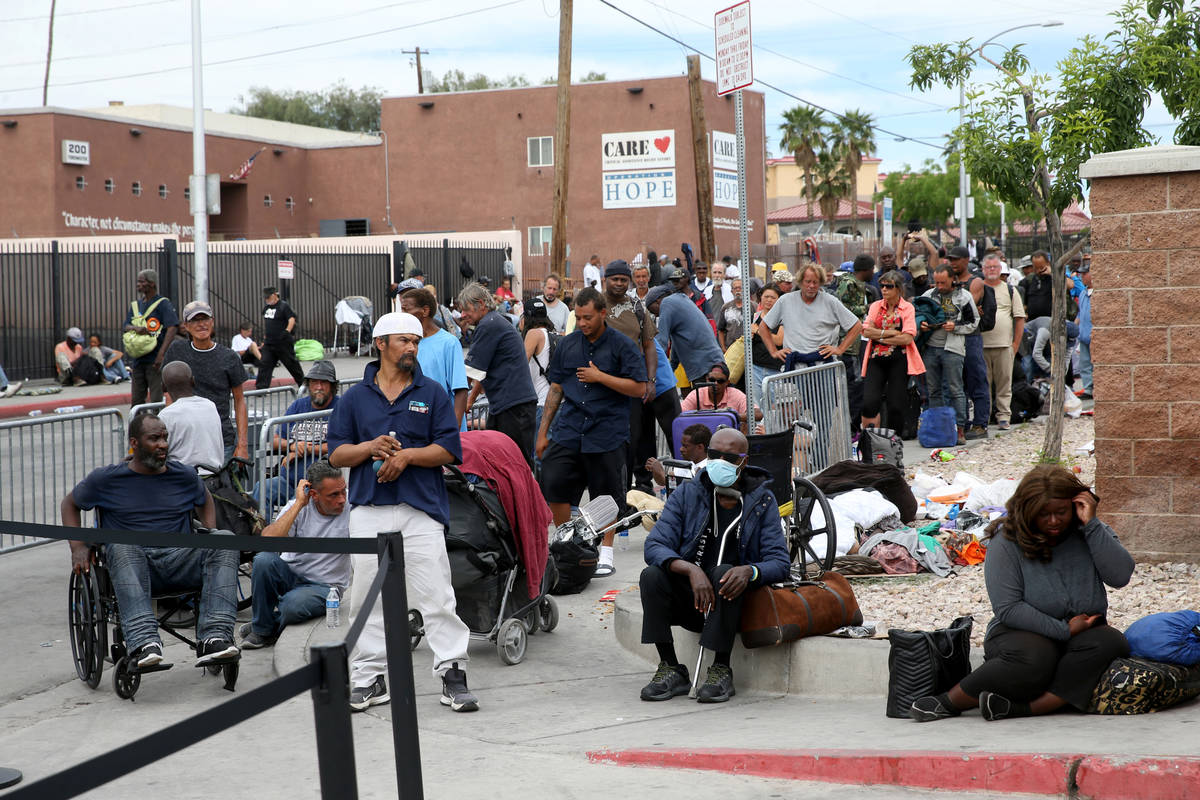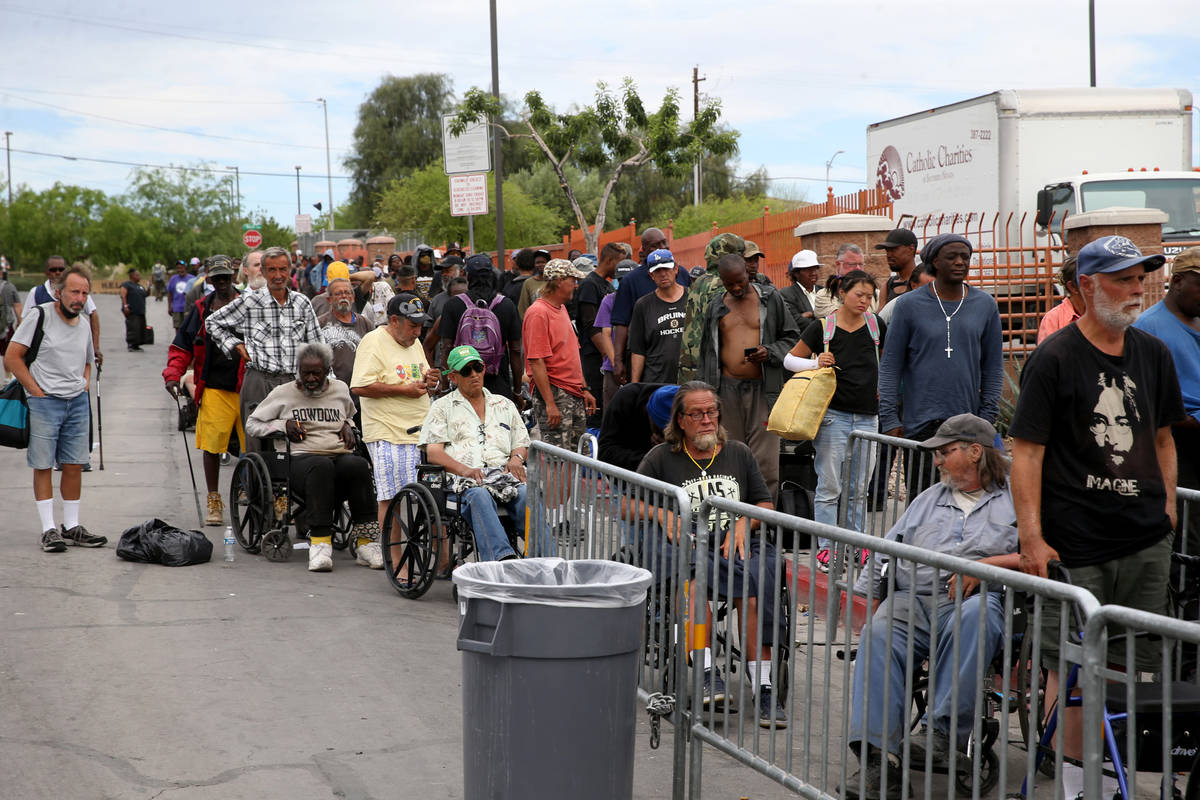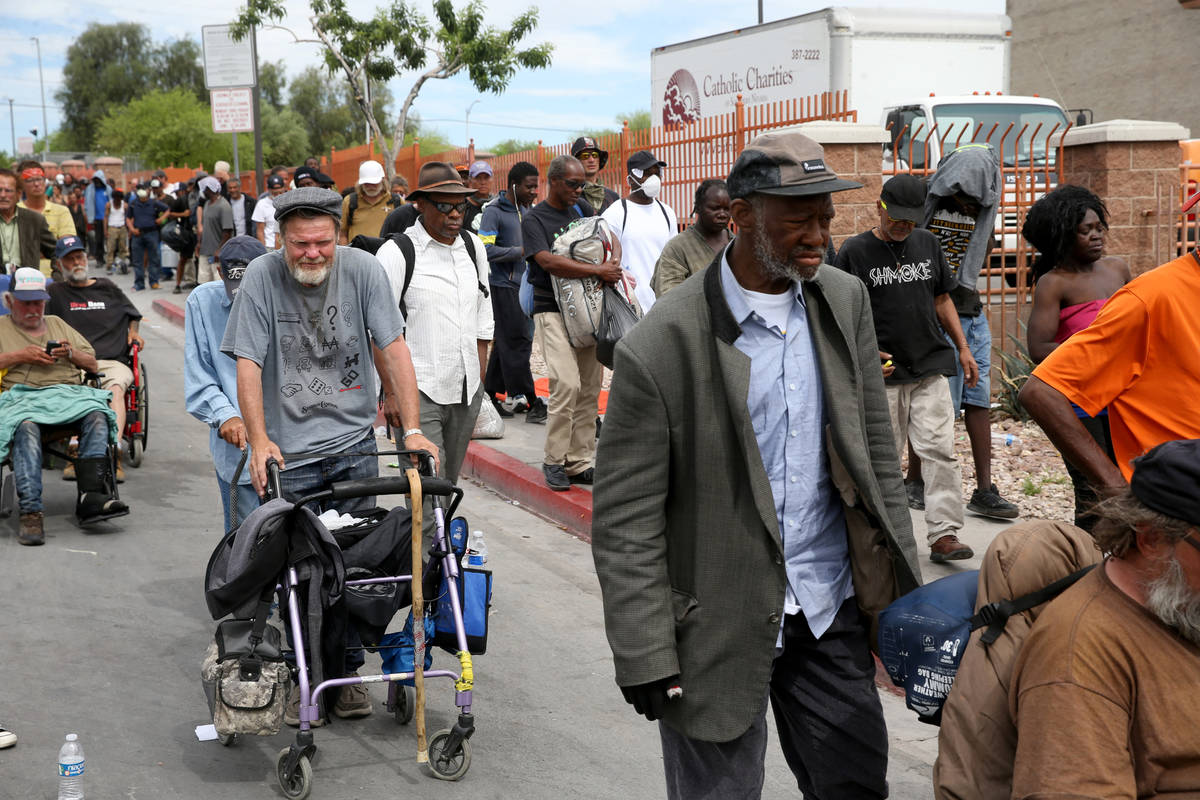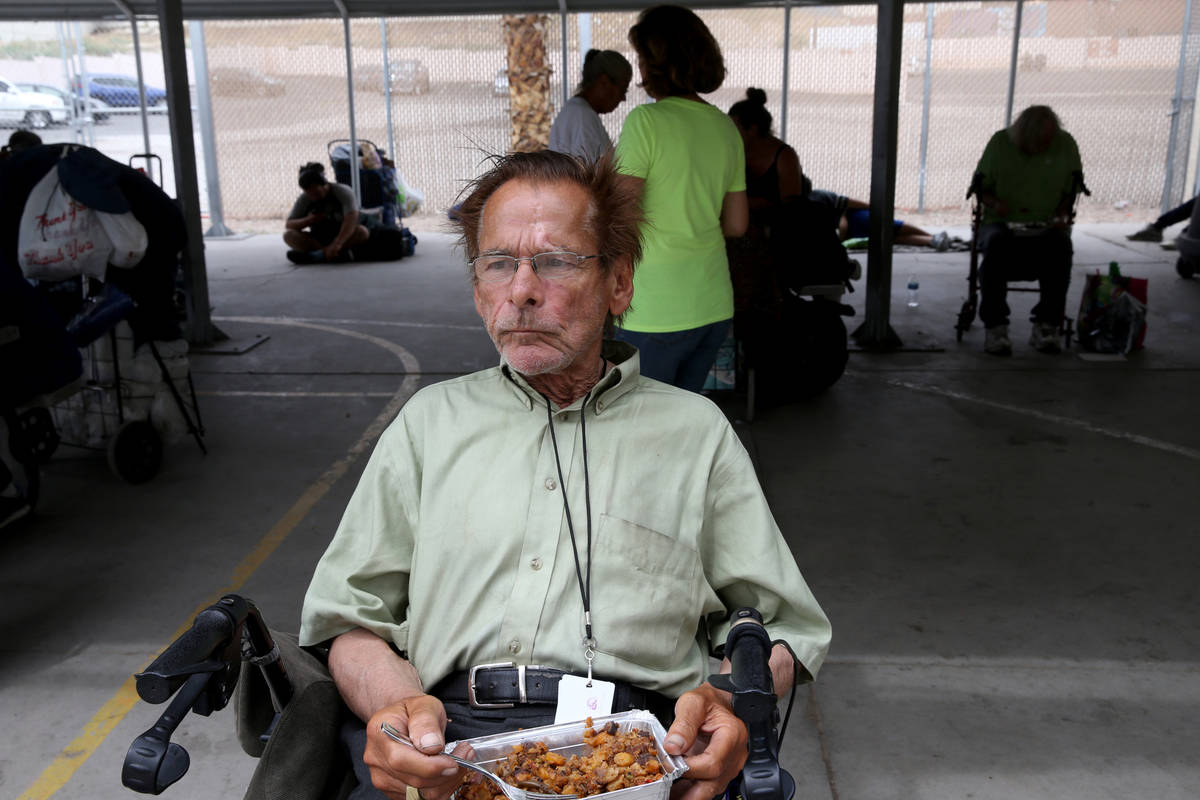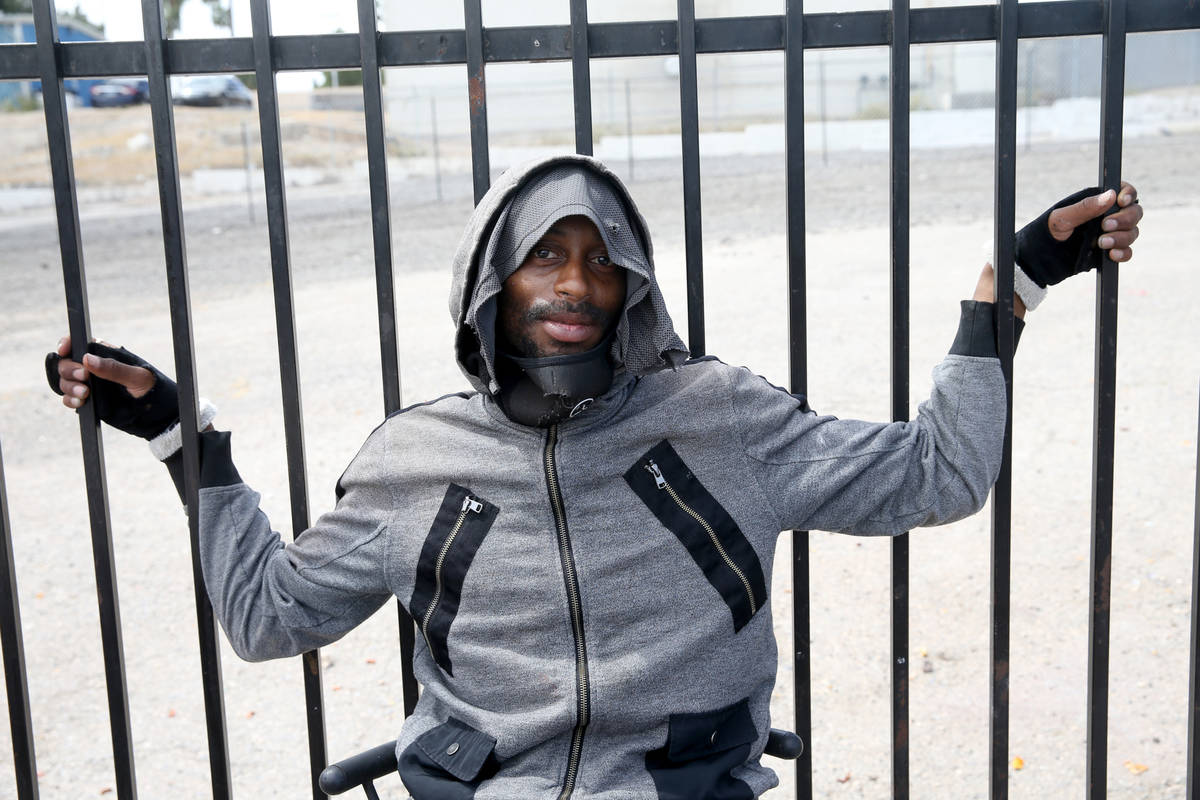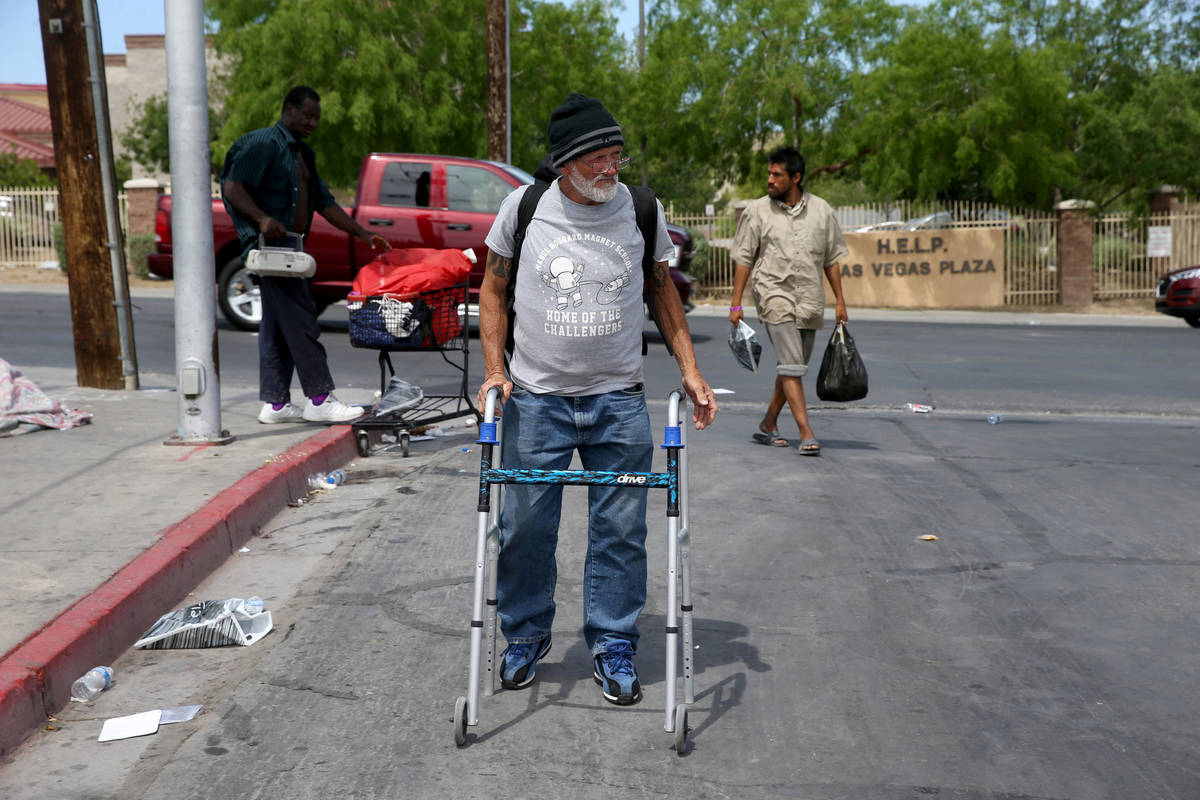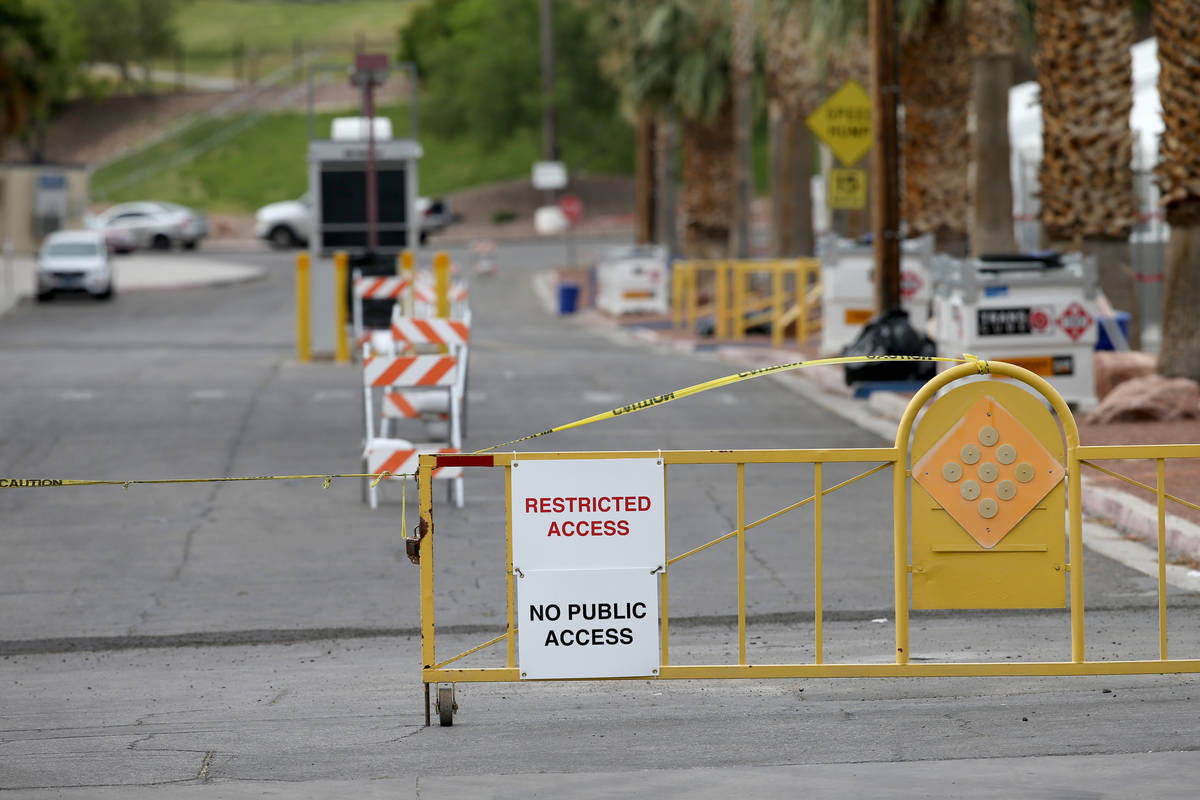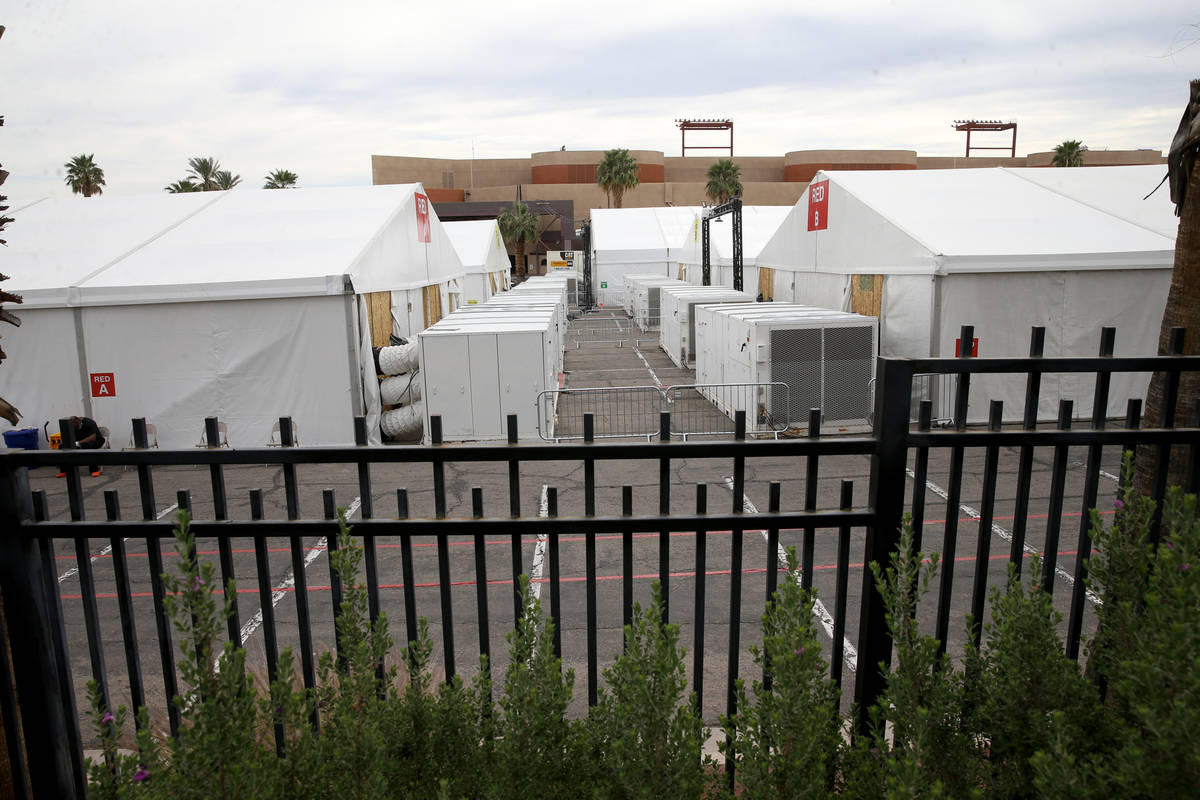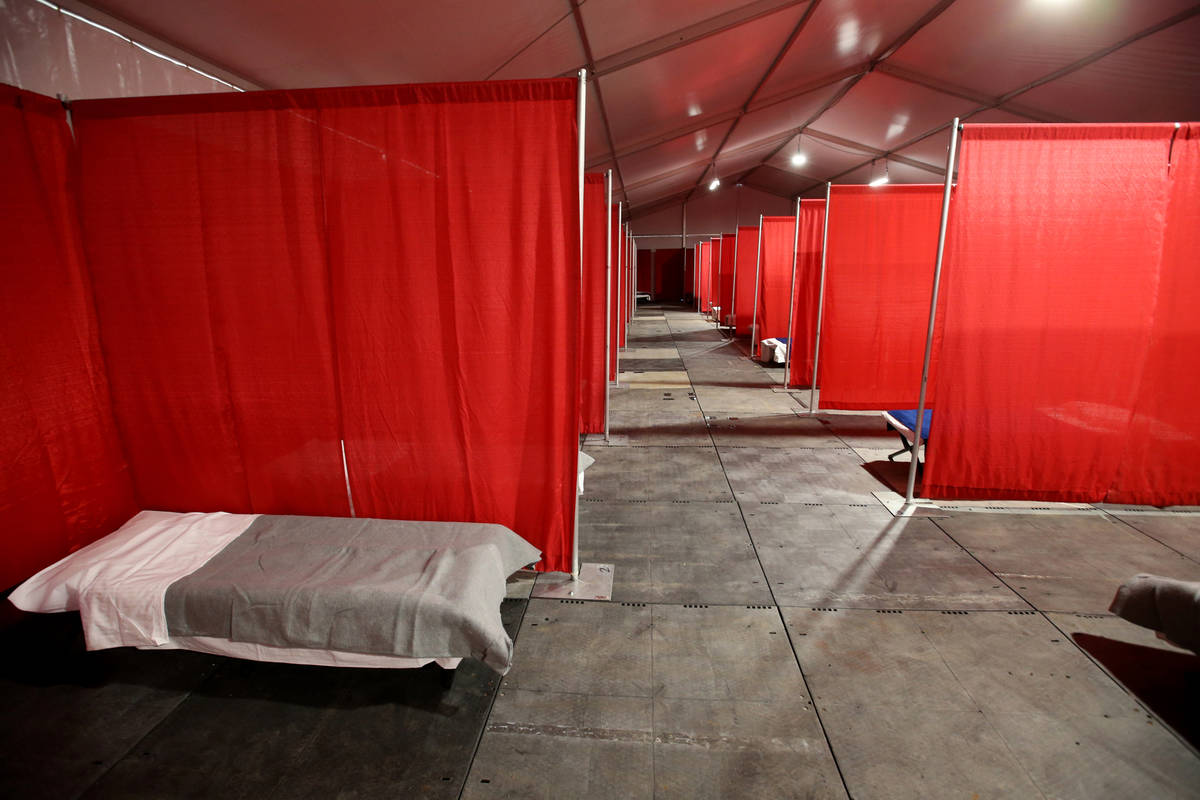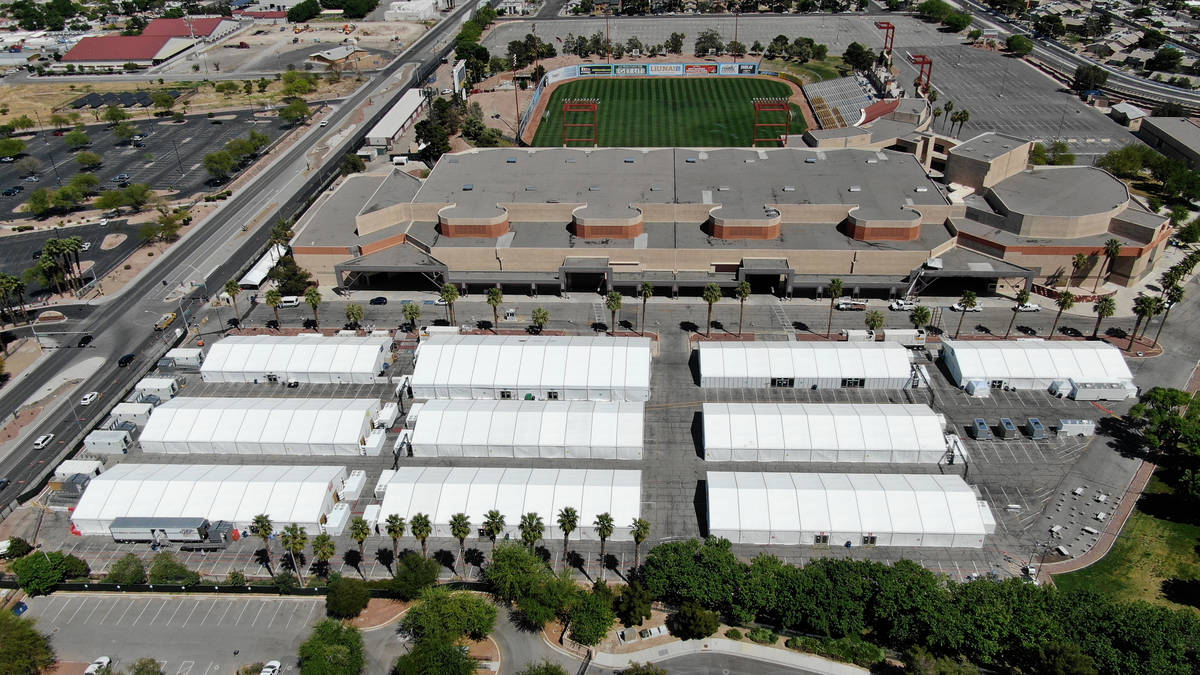Isolation complex for homeless in Las Vegas sees trickle of patients
In the two-and-a-half weeks since the county and city of Las Vegas started operating the homeless ISO-Q (isolation/quarantine) complex at Cashman, 112 people have been treated.
The facility has a capacity to house 500, but as of Friday morning, there were 64 patients: five who had been diagnosed with COVID-19; 27 who had been exposed to a diagnosed patient but exhibited no symptoms; and 32 who were showing symptoms of the disease caused by the coronavirus. Each group was isolated in a separate wing of the complex. Ten patients have tested positive at the facility since it opened on April 13.
Because the complex has seen relatively few patients, some critics have questioned whether the approximately $8 million it cost was a wise investment.
But Lisa Morris Hibbler, the city’s chief community service officer, said the impact of the complex is hard to measure because staffers still don’t have enough testing kits to check those with no symptoms and find out if they are silent spreaders of the disease.
“Because of the inability to test, we don’t know how well we’ve done,” she said. “We will see additional patients as testing becomes available, and then we’ll know if the person is sick and doesn’t know it.”
The complex initially had about 30 antibody tests — capable of telling if an individual had the disease previously — and 100 or so COVID-19 tests, all of which have been used.
Requests for more test kits have been sent to the state, but no one can say when the complex might receive more and how many it could get.
Regardless, Morris Hibbler said the city has met its objective based on the screening process, “which is to care for those who are sick and to mitigate the process of community spread.”
The tented, air-conditioned complex, which was built in two weeks, sits near the intersection of Washington Avenue and Las Vegas Boulevard and is believed to be the first such facility in the nation to cater specifically to the homeless, officials have said. Each of the three sections at the complex has its own shower and bathroom, to prevent the different populations from mingling.
Those who come are referred to by shelters or the emergency room and taken there by ambulance.
Boring but restful
One homeless man, Robert Godleski, was in the yellow tent for those with symptoms but no known exposure for six days before being released Wednesday after testing negative for the coronavirus at Valley Hospital Medical Center.
The 73-year-old said the staff at Catholic Charities of Southern Nevada encouraged him to go to the complex because he had a runny nose and burning eyes.
“The people are real nice, everything’s immaculate and sterilized. It’s just boring,” he said Thursday as he waited in line for lunch outside Catholic Charities on crowded Foremaster Lane, where about 1,000 lined up and nobody stood 6 feet apart. “I didn’t mind it; I saved some money and got some rest.”
Godleski said he’s not afraid of the disease spreading through the homeless community, but acknowledged “maybe I should be.”
Christopher Herring, a sociologist at the University of California, Berkeley, said many homeless are similarly nonchalant about a disease that seems tailored to decimate their communities.
“Folks are so worried about their mere survival, COVID-19 is actually not that scary to a lot of them,” said Herring, who with a team of other researchers published a report last month on public health and homelessness during the coronavirus pandemic.
Study finds shelters unsafe
The study found that housing in hotel rooms and other empty spaces is still imperative to mitigate the spread, and evidence shows that high-density settings like shelters are not safe — even if they follow social distancing guidelines.
“This would be a great model if we had testing,” he said, referring to the ISO-Q facility. “We really only have these non-pharmaceutical interventions, like keeping people in their own spaces.”
To help provide more housing for the medically fragile during the pandemic, Clark County also is spending $414,000 per month for quarantine and isolation beds at Well Care Living, CrossRoads of Southern Nevada and in hotels or motels, spokesman Dan Kulin said.
Additionally, the county earmarked $114,785 to house homeless families during this time and is providing another $66,300 a month to HELP of Southern Nevada for case management, as well as homeless outreach to identify and locate high-risk people on the streets.
Working with the Southern Nevada Health District, the valley’s shelters also are screening hundreds of people daily.
At Catholic Charities, where the first confirmed COVID-19 case in a homeless individual occurred, the shelter is operating at half-capacity to increase social distancing and is tracking where people sleep to later identify who may have been exposed.
CEO Deacon Tom Roberts said testing is imperative, but that the crisis “has exposed a sore in this population in a big way.”
“Once they start getting tested, I think there’s a high probability those numbers will go up,” he predicted.
“They’re already physically vulnerable living on the streets, and they’ve been on top of each other from the beginning.”
Contact Briana Erickson at berickson@reviewjournal.com or 702-387-5244. Follow @ByBrianaE on Twitter.



